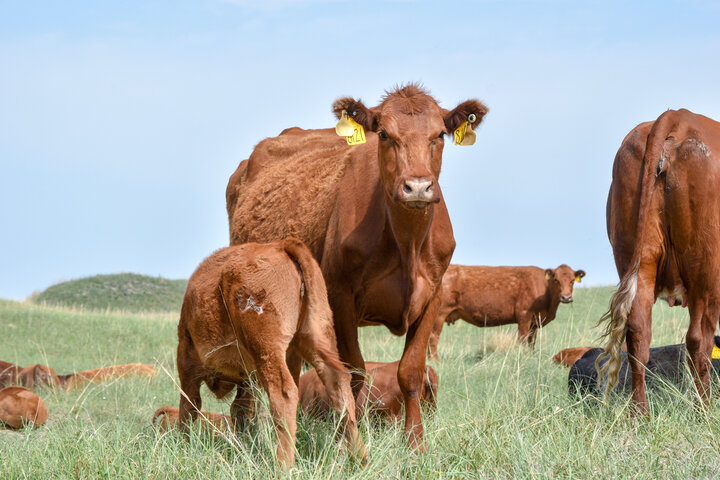Regardless of your choice of livestock fly control product and application method, plan for resistance. For example, many horn fly populations in Nebraska exhibit a level of resistance to synthetic pyrethroid insecticides.
Fly resistance to insecticides is defined by the Insecticide Resistance Action Committee (IRAC, https://irac-online.org/as a heritable change in the sensitivity of a pest population reflected in repeated failure of a product to achieve the expected level of control when used according to the label recommendation for that pest species. Simply put, flies can develop resistance to products if used repeatedly.
The recommended practice to manage resistance is to alternate insecticide Mode of Action (MoA) groups. This applies to dusts, insecticide ear tags, animal sprays, pour-ons, insect growth regulators (IGRs and also known as feed-throughs), and compressed air application devices.
Insecticide MoA groups are based on how the insecticide works against insects. Continual use of products from a single MoA group can lead to reduced control and resistance to all products in that MoA. To improve fly control and minimize resistance, do not apply insecticides within the same MoA repeatedly. Rotate between MoA groups every fly season and if possible, during the fly season. The table below contains information about the primary action site, the active ingredient, and a partial list of products from each MoA group currently labeled for use against pasture flies.
|
IRAC (https://irac-online.org/) MoA Classification of Pasture Fly Control Products Available |
||
|
Main Group, |
Sub-group (if applicable), Active Ingredient |
Partial List of Products |
|
1 Acetylcholinesterase (AChE) Inhibitor Nerve Action |
1B, Organophosphates |
Corathon™, MAX40™, Patriot™, Prolate/Lintox-H-D™, Co-Ral®, Rabon®, Ravap®, Vapona® |
|
3 Sodium channel modulators Nerve action |
3A, Pyrethroids Pyrethrins |
PYthon™, Cylence Ultra™, Saber™ Extra, Permethrin® Evergreen® EC60-6
|
|
6 Glutamate-gated chloride channel (GluCI) allosteric modulators Nerve and muscle action |
Avermectins Milbemycins |
Abacmectin, XP820™, Ivomec®, Eprinex®, Dectomax®, Cydectin® |
|
7 Juvenile hormone mimics Growth regulation |
7A, |
Methoprene (Altosid®) IGR |
|
15 Inhibitors of chitin biosynthesis affecting CHS1 Growth regulation |
Benzoylureas |
ClariFly® |
|
17 Molting disruptor |
Cyromazine |
Neporex® |
Interviews with the authors of BeefWatch newsletter articles become available throughout the month of publication and are accessible at https://go.unl.edu/podcast. You can subscribe to the BeefWatch newsletter here: http://go.unl.edu/Beefwatch_subscribe
Topics covered:
Backgrounding/stocker/yearling, Pasture & range, Grazing systems & best practices, Cattle health & BQA, Cattle health, Fly & insect control, Research

